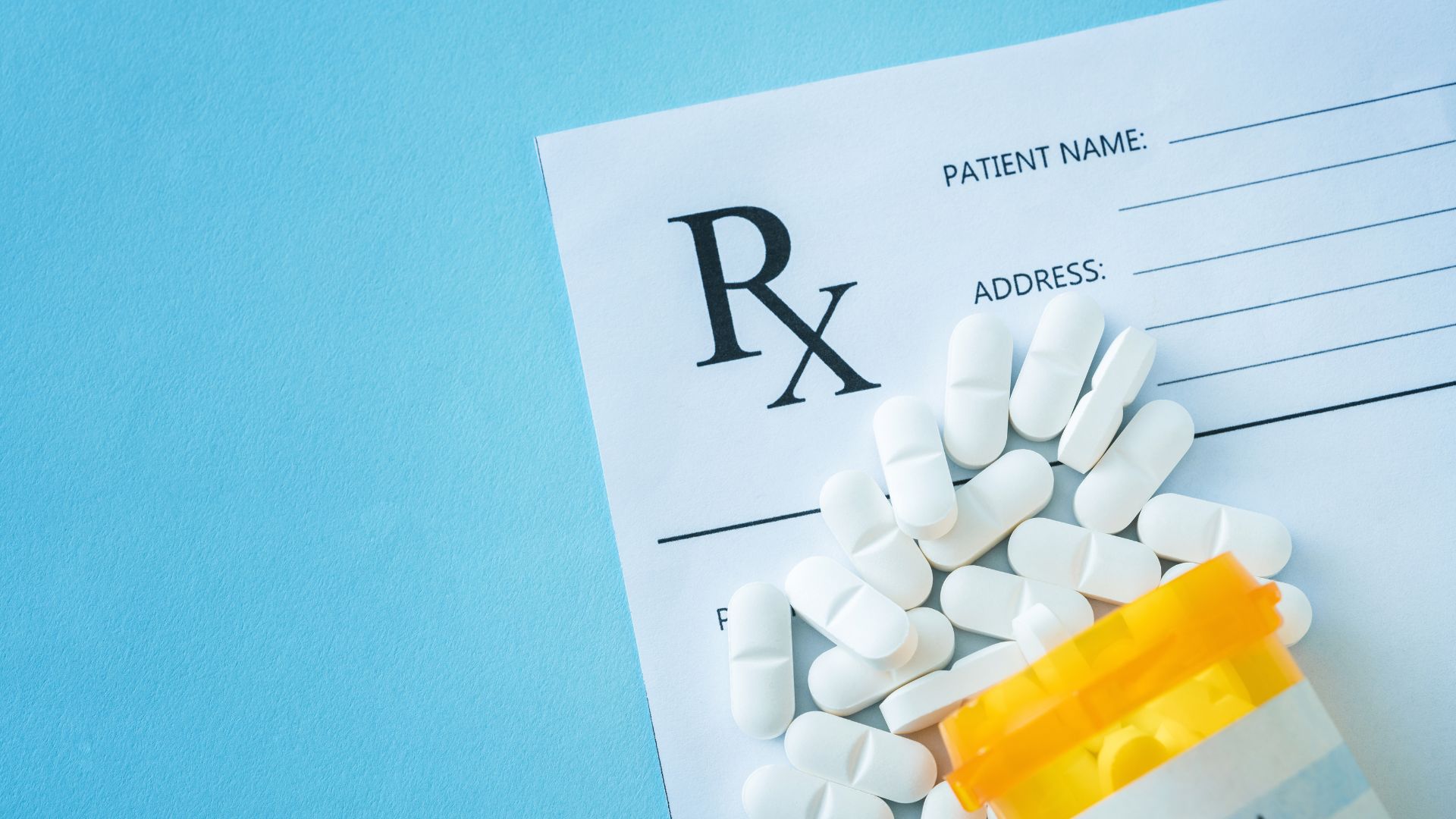Table of Contents
Key Points
- Tramadol is a synthetic opioid used for pain management after surgeries and other forms of chronic pain.
- The drug can be consumed in tablet or liquid form, but can also be injected when in a hospital setting.
- While Tramadol can be used with certain medications like acetaminophen (Tylenol), combining other medications without prescription can lead to dangerous side effects
- Tramadol is classified as a schedule IV drug which means it has a low percentage of abuse compared to other opiods.
- For individuals experiencing Tramadol addiction, there are effective treatment options available, including medication-assisted treatment (MAT), inpatient and outpatient programs, group therapy, and holistic therapies.
What is Tramadol?
Tramadol[1] is a type of prescription drug known as a synthetic opioid that effectively removes moderate to severe pain that other pain-relievers may not effectively treat.
Usually prescribed after surgery, Tramadol can help manage neuropathic pain like burning or tingling sensations. You can take Tramadol in tablet or liquid form. It can also be administered via injection by a doctor.
What is Tramadol Used For?
Tramadol is prescribed for a variety of reasons. Below are common reasons and use cases for the medication.
Pain Management
Tramadol effectively relieves pain triggered by chronic ailments such as osteoarthritis or fibromyalgia, along with short-term pain that follows major surgeries. The medication takes an hour to start showing results, and its effects can last for up to six hours.
Psychiatry
Tramadol is incredibly effective when treating diverse psychiatric disorders. It has the ability to alleviate symptoms associated with mental health conditions and can even reduce some of the associated physical pain resulting from anxiety and post-traumatic stress disorder.
While there is still uncertainty surrounding the exact way it achieves its therapeutic effects, there is still a belief that it regulates the brain’s dopamine and serotonin systems.
Extended Release Formulations
Tramadol comes in an extended-release form which slowly releases the medication into the bloodstream over 24 hours. This is especially helpful for individuals who need continuous pain relief.
Additionally, it can be beneficial for those who have difficulty swallowing pills as it reduces the need for multiple doses throughout the day.
Off-Label Uses
In addition to its approved uses, Tramadol is sometimes used off-label[2] to manage restless leg syndrome or alleviate opioid withdrawal symptoms. Although not officially endorsed by the FDA, some healthcare providers may still suggest these uses in certain situations.
How Does Tramadol Work?
In order to understand the mechanism of Tramadol, it’s important to note that it functions differently from traditional opioids. Tramadol is both an opioid receptor agonist and a serotonin-norepinephrine reuptake inhibitor (SNRI)[3].
It can effectively attach to pain receptors in both the brain and spinal cord. When doing this, it obstructs the reabsorption of serotonin and norepinephrine neurotransmitters, which helps to provide effective pain management.
Tramadol also activates the descending inhibitory system, which is a natural pain control system in the body. The activation of this system further helps to reduce pain in the body.
After consumption, Tramadol is broken down by the liver’s cytochrome P450 system into O-desmethyl tramadol (O-DSMT). O-DSMT has a higher affinity for μ-opioid receptors, which makes it more effective than Tramadol on its own.
Once it attaches to these receptors, it closes specific ion channels and stops the pain signals from being transmitted throughout the central nervous system.
Can Tramadol Be Used With Other Medications?
As with any medication, it is crucial to discuss its potential interactions with other prescriptions with a physician or pharmacist. Some medications can interact with Tramadol, causing serious side effects, while drug interactions may simply reduce its effectiveness.
It is imperative to avoid using Tramadol together with any medication that impacts serotonin levels in the brain, including SSRIs and other drugs utilized for the treatment of depression, anxiety, and migraines. This combination may trigger a critical condition known as serotonin syndrome, leading to a life-threatening outcome.
Similarly, Tramadol may interact with other pain medications, like muscle relaxers and benzodiazepines, leading to breathing problems, potential for overdose, and addiction. It is important to keep track of all medications being taken concurrently.
While there are certainly potential negative interactions between Tramadol and other medications, there are situations where it may be safe to take and even necessary. In some cases, physicians prescribe Tramadol alongside other pain medications, like acetaminophen or ibuprofen, for more effective pain relief.
These combinations must be monitored by a physician, as they may increase the risk for liver and kidney damage when taken together for long periods of time.
What is Tramacet?
Although Tramadol and Tramacet are potent analgesics that serve the same purpose, they differ in composition. Tramadol is a synthetic compound, while Tramacet is a blend of Tramadol and Acetaminophen. Uniquely, Tramadol employs a single active ingredient in pain management, while Tramacet takes a dual approach to tackle pain.
Regarding dosage efficacy, Tramacet proves to be more potent than Tramadol. Tramadol is typically administered in single doses of 50-100 mg, whereas Tramacet contains 37.5mg of Tramadol and 325mg of Acetaminophen per tablet. Consequently, those who choose Tramacet can expect faster and more effective relief with lower dosages.
Although Tramacet is more effective, it has an increased risk of potential side effects. Acetaminophen is known to have negative implications on the liver, and when combined with Tramadol, the risks could be amplified.
Additionally, Tramadol usage may cause mild side effects such as nausea, dizziness, and constipation. However, in rare cases, Tramadol can trigger seizures, making it unsuitable for individuals with convulsive episodes.
Are There Dangers When Combining Tramadol and Paracetamol?
Tramadol and Paracetamol[4] are two painkillers with unique mechanisms of action in the body. Tramadol is a synthetic opioid drug, while Paracetamol is an analgesic capable of easing pain and fever.
Although the two may be used simultaneously, this has an elevated risk of side effects and complications. In addition, prolonged intake or consumption of high doses of these drugs can lead to undesirable outcomes such as liver damage. Therefore, patients prone to liver problems or taking medication that damages liver function must avoid combining the two drugs.
The combination of Tramadol and Paracetamol can pose a risky threat to respiratory functions. Specifically, when administered with other opioids, Tramadol may result in respiratory depression – a severe medical condition that can lead to a slowdown or stoppage of breathing.
While Paracetamol alone does not cause respiratory depression, its combination with other opioids may increase the risk. Therefore, for optimal safety and well-being, it is essential to adhere to prescribed dosages and not consume multiple medications containing Tramadol or opioids simultaneously.
The combination of Tramadol and Paracetamol carries the potential risk of developing serotonin syndrome. This condition arises from an excessive buildup of serotonin in the body. Tramadol has been known to elevate serotonin levels, while it has been noted that Paracetamol can cause serotonin syndrome in certain patients.
Signs to look out for include increased agitation, confusion, heart palpitations, hypertension, and fever. If these symptoms occur upon combining Tramadol and Paracetamol, it is crucial to seek prompt medical attention.
In addition, taking too large a dose of Tramadol or Paracetamol can result in addiction and dependency. As an opioid, Tramadol can be habit-forming, and Paracetamol can induce dependence when consumed in excessive quantities or for an extended period.
What are the Possible Side Effects of Using Tramadol?
As with all medications, Tramadol has potential side effects, including addiction and abuse, so learning about its possible consequences is essential. Below are some potential side effects of Tramadol and what you can do to mitigate them.
Dizziness and Drowsiness
Tramadol often causes dizziness and drowsiness as side effects since it impacts the central nervous system and can have a sedative impact. To ensure safety, it is advisable not to drive or manage heavy machinery while on Tramadol since the sedative effect may hinder your ability to do so effectively.
Nausea and Vomiting
Tramadol can often cause nausea and vomiting due to its impact on the digestive system. To alleviate these symptoms, taking Tramadol with food or splitting the dosage throughout the day is advisable.
Constipation
Slowing down the movement of the intestines, Tramadol may lead to constipation. Consuming fluids and foods rich in fiber can help relieve this symptom. However, if you are facing severe constipation, it is essential to consult your doctor, who may suggest taking a laxative.
Serotonin Syndrome
In other side effects, Tramadol may cause serotonin syndrome, a rare but severe condition resulting from excessive serotonin in the body. Confusion, rapid heartbeat, muscle rigidity, and high fever are symptoms of serotonin syndrome. If these symptoms occur, prompt medical attention is essential.
Is Tramadol Addictive?
The Drug Enforcement Administration (DEA) classifies Tramadol as a Schedule IV drug. This means that it has a low potential for abuse and dependence[5] compared to other opioids, such as fentanyl and oxycodone.
However, this does not imply that Tramadol is not addictive. Some people may become addicted to Tramadol even when taking it as instructed by their doctor.
Tramadol may cause feelings of euphoria, even at recommended doses. This poses a significant threat to those with a history of addiction or substance abuse. Additionally, a physical dependence can arise, meaning the body gets reliant on the drug and may suffer withdrawal symptoms if usage is stopped abruptly.
To spot addiction, be alert for increasing tolerance. Tolerance happens because the body gets used to a drug, and more of it is needed to produce the same results. Taking Tramadol in higher amounts than recommended or more often than instructed may indicate addiction.
What are the Withdrawal Symptoms of Tramadol Addiction?
When someone is addicted to Tramadol, it can be challenging to stop taking the drug. This is because of the physical dependence that develops with prolonged use. When this happens, stopping Tramadol suddenly can cause withdrawal symptoms. Below are some of the most common withdrawal symptoms associated with tramadol addiction:
Physical Symptoms
Withdrawal from Tramadol can cause physical symptoms that affect the central nervous system, including nausea, dizziness, vomiting, sweating, fever, muscle pain, and tremors. These symptoms can be severe, leading to dehydration, high blood pressure, and an elevated heart rate. The severity of opioid withdrawal symptoms depends on how often and how much the drug is used.
Emotional Symptoms
Prolonged use of Tramadol can significantly impact mental health, particularly for those who develop an addiction to opioids. Emotional symptoms such as anxiety, depression, irritability, mood swings, and even suicidal thoughts may occur. The severity of these symptoms can vary based on an individual’s mental health and susceptibility to mental health issues.
Psychic Symptoms
During Tramadol withdrawal, a person may experience psychic symptoms such as hallucinations, difficulty concentrating, and intense yearning for the drug. The severity of the hallucinations can vary and may be accompanied by other symptoms like paranoia and confusion.
Cravings for opioids can be intense, sometimes leading to relapse as the individual may engage in drug-seeking behavior.
Sleep Disorders
Sleep disorders can result from addiction to Tramadol, which affects the quality and quantity of sleep. Insomnia is a frequent withdrawal symptom that can last weeks and make it difficult for individuals to sleep well. In addition, such sleep disorders caused by opioid addiction can lead to health problems like anxiety, depression, and weakened immune systems.
Gastrointestinal Symptoms
Gastrointestinal symptoms are often experienced during Tramadol withdrawal, including diarrhea, abdominal cramps, and loss of appetite. These symptoms can lead to dehydration and malnutrition, resulting in various other health challenges like weight gain or loss, anemia, and chronic fatigue.
Treatment Options for Tramadol Addiction
For anyone struggling with Tramadol addiction, it is crucial to seek help. Several treatment options are available for individuals suffering from opioid abuse, including medication-assisted treatments, psychotherapy and counseling, and support groups.
Medication-Assisted Treatment
Medication-assisted treatment (MAT) is a treatment option to help patients overcome Tramadol addiction. This involves using medications such as buprenorphine or methadone to help reduce withdrawal symptoms and cravings.
MAT also involves counseling and behavioral therapy to address underlying issues contributing to the individual’s addiction. This approach effectively reduces opioid overdoses and has been proven to be an effective way to manage drug addiction.
Inpatient Treatment
Inpatient treatment involves the admission of an individual to a rehabilitation center for intensive treatment. This treatment option requires the individual to live in the center for some time and is recommended for individuals with more severe addictions.
Inpatient treatment provides a drug-free environment and medical support around-the-clock. In addition, it offers various a variety of therapies to address the physical, emotional, and psychological effects of addiction.
Outpatient Treatment
Outpatient treatment is a treatment option that allows individuals to continue their everyday lives while receiving treatment. This treatment is less intensive than inpatient treatment and is recommended for individuals with less severe addiction.
Outpatient treatment involves counseling and therapy sessions that can be scheduled around the individual’s daily routine. It is also a cost-effective option for individuals unable to afford inpatient treatment.
Support Groups
Support groups provide a safe space for individuals to share their struggles and receive encouragement and support from others who have gone through similar experiences. These groups can benefit individuals who are recovering from Tramadol addiction.
Group therapy sessions provide a sense of community and offer opportunities for individuals to build lasting relationships with others in recovery. Support groups such as Narcotics Anonymous (NA) and Alcoholics Anonymous (AA) are available in most communities and can be helpful for individuals seeking support and guidance.
Holistic Treatments
Holistic treatments approach addiction differently and focus on treating the whole person. Holistic treatments may include alternative therapies such as yoga, meditation, and acupuncture.
These treatments aim to promote physical, psychological, and spiritual wellness. While not all of them are evidence-based, these alternative therapies can still benefit individuals in addiction recovery.
.
Frequently Asked Questions About Tramadol & What it Does
Below are some of the most frequently asked questions related to tramadol and its uses.
Long-term use of Tramadol may lead to several side effects, including dependence, tolerance, and withdrawal symptoms. Other potential long-term effects include dizziness, constipation, nausea, headache, drowsiness, sleep disturbances, and mood changes. It is essential to follow your doctor’s prescription and guidance when taking Tramadol to minimize these risks.
There are several natural alternatives to Tramadol that may help with pain management. Some options include:
- Acupuncture
- Massage therapy
- Physical therapy
- Herbal remedies
- Meditation
- Yoga
- Tai Chi
- Non-addictive pain relievers
It’s important to consult with your healthcare provider before trying any new treatments, as they may not be suitable for everyone.
Tramadol is a Category C drug that can be harmful to an unborn baby, so it’s best to avoid using it during pregnancy unless the benefits outweigh the risks. Additionally, Tramadol can pass into breast milk and potentially harm a nursing infant. If you are pregnant or breastfeeding, it’s important to consult with your doctor before using Tramadol.
The chances of developing dependence on Tramadol depend on various factors such as the dose, duration of use, and individual susceptibility. Regular use of Tramadol, especially at higher doses or for longer periods, can lead to dependence in as little as a few weeks.
To reduce the risk of dependence, it is recommended to follow your doctor’s instructions and take the smallest effective dose for the shortest period possible.
Is there an age limit for taking tramadol, or is it only recommended for adults?
Tramadol is typically prescribed for adults, as its safety and effectiveness have not been thoroughly studied in children. In some cases, it may be prescribed for adolescents aged 12 years and older for specific conditions or under close medical supervision.
It is not recommended for children under 12 years of age. Always consult your healthcare provider before giving Tramadol to anyone under 18 years old.
[1] Tramadol. National Center for Biotechnology Information. (n.d.-a). https://www.ncbi.nlm.nih.gov/books/NBK537060/ on May 25, 2023
[2] Bumpus, J. A. (2020, October 29). Low-dose tramadol as an off-label antidepressant: A data mining analysis from the patients’ perspective. ACS pharmacology & translational science. https://www.ncbi.nlm.nih.gov/pmc/articles/PMC7737323/ on May 25, 2023
[3] Sansone, R. A., & Sansone, L. A. (2014, March). Serotonin norepinephrine reuptake inhibitors: A pharmacological comparison. Innovations in clinical neuroscience. https://www.ncbi.nlm.nih.gov/pmc/articles/PMC4008300/ on May 25, 2023
[4] Husic, S., Izic, S., Matic, S., & Sukalo, A. (2015, February). Efficacy and safety of a fixed combination of Tramadol and Paracetamol (acetaminophen) as pain therapy within Palliative Medicine. Materia socio-medica. https://www.ncbi.nlm.nih.gov/pmc/articles/PMC4384875/ on May 25, 2023
[5] Shah, K., Stout, B., & Caskey, H. (2020, July 11). Tramadol for the management of opioid withdrawal: A systematic review of randomized clinical trials. Cureus. https://www.ncbi.nlm.nih.gov/pmc/articles/PMC7417126/ on May 25, 2023



















